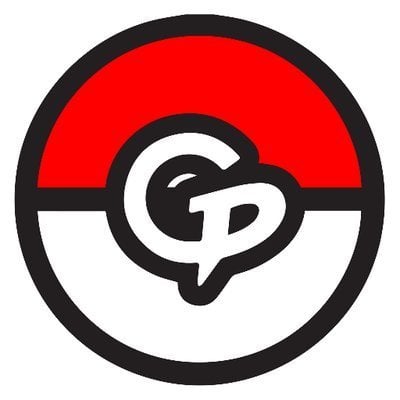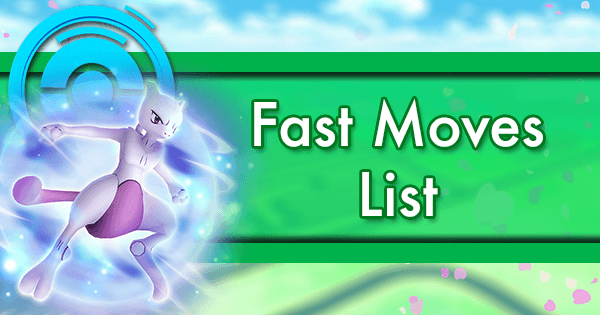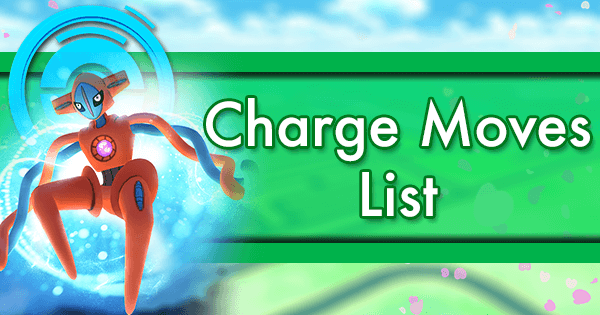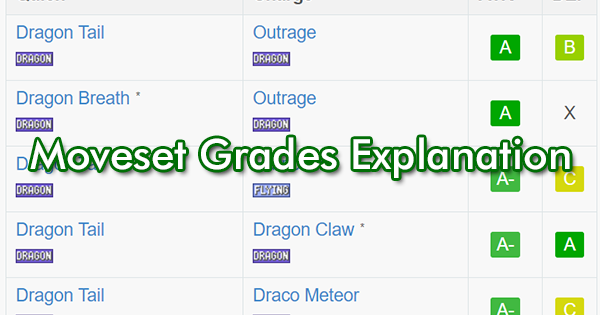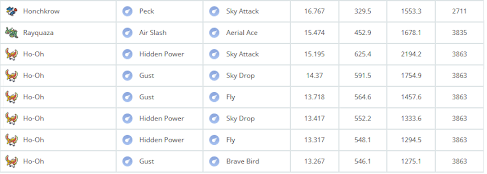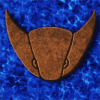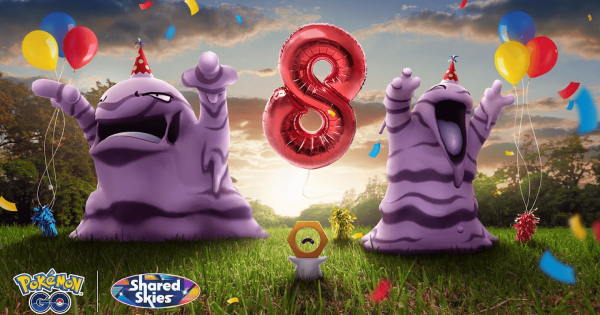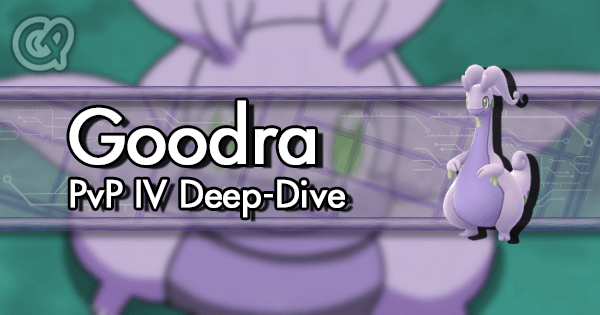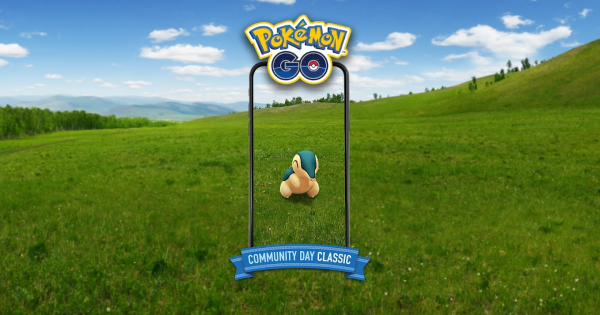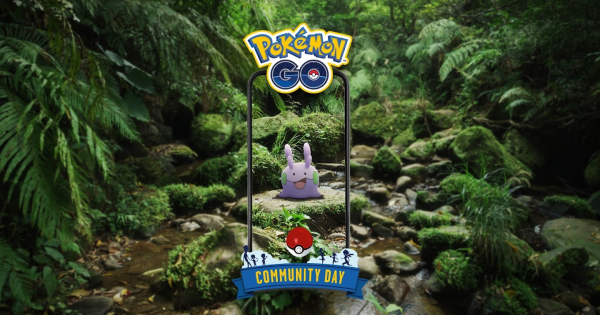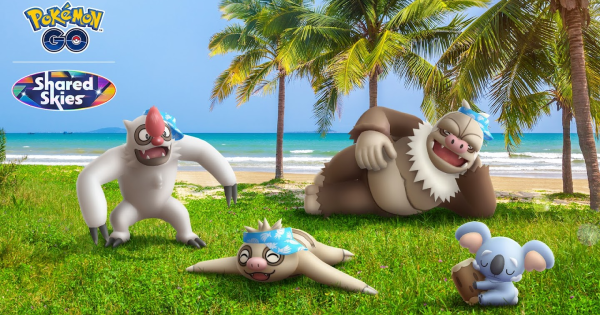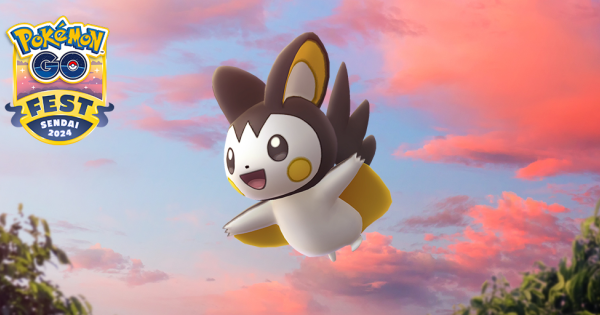Introduction
On March 15th, 2018, Lugia returned to the raid-scene. Lugia re-joining the raid-pool has been something of a joke for quite some time now just because of how often it seems to happen, but this date brought something unexpected with it: Sky Attack, an attack that had had been considered “good” suddenly received a small damage buff and instantly became “great”. As a result, Lugia’s utility, while still fairly niche, saw a definite increase, and we’re still feeling the tremors from this change to this day with Pokemon such as Moltres and Honchkrow receiving this now coveted move.
This change makes one fact very clear; Niantic is willing to buff moves, and specifically target under-performing Pokemon. It also begs the question: what other buffs can we hope for, or even expect in order to patch up our beloved under-performing Pokemon?
This article is the beginning of a new series that will deal with different ways to buff Pokemon who did not translate well into the Pokemon Go world, be it due to poor stats, poor typing, or poor movesets. We will make appropriate changes and try to raise these Pokemon to the point of being meta-relevant, but not meta-breaking, using any possible tools at our disposal. The first Pokemon that we’re going to set our sights on is the legendary phoenix and Rainbow Pokemon, Ho-Oh. In particular, we’re going to see if we can carve a niche in the metagame using Ho-Oh’s flying type.
Note on PvE Terminology
Most of us are familiar with the effects of attacks in PVE, but here’s a quick rundown for anyone uninitiated: to start with, here are break-downs two of Ho-Oh’s moves; one is a quick move, the other a charged move.
Extrasensory
Type: Psychic
Base Power: 12
Damage Window: 0.85 seconds
Move Cooldown: 1.10 seconds
Energy Delta 12
Solar Beam
Base Power: 180
Type: Grass
Energy Bars: 1
Damage Window: 2.70 seconds
Move Cooldown: 4.90 Seconds
These two share a lot in common, so here’s a very quick and basic breakdown:
Base Power represents how strong the attack is before a Pokemon’s stats calculate how much damage it will do. Typing is where on the rock-paper-scissors chart that is Pokemon type interactions the attack lies, as well as adding in a bit of extra damage if a Pokemon and the attack that it’s using are of the same type, called STAB (Same Type Attack Bonus). Damage window is how long it takes a move to actually execute once it’s charged and you hit the button to use it. Cooldown is how long you have to wait after that window before you can attack again. Energy Delta is how much energy a Pokemon gains on each use of a quick-move. And finally, energy bars show how much of the Pokemon’s total energy bar is taken up to execute a charged attack; 1 bar takes the entire energy bar to use, 2 bar takes half of the bar, and 3 bar takes one-third of the bar to use.
Beyond these terms, we’ll also be using DPS and TDO a lot. DPS stands for Damage Per Second, and refers to how quickly a Pokemon can rack up damage against a target, while TDO stands for Total Damage Output, and talks about how much total damage a Pokemon can do before it faints.
Basically, all of these factors come together to determine just what a pokemon can do in battle. They’re fairly important to know for figuring out what attacks are best for a given Pokemon, and important to know for a frame of reference for this article. Below are a few links to useful resources in regards to attacks in Pokemon Go PVE.
The Problem with Ho-Oh
PvE
By this point, pretty much everyone in the community is familiar with Ho-Oh in Pokemon go: a fav-favorite box legendary from a fan-favorite generation that was relegated to an absolutely terrible position. It was one of the first Pokemon to suffer from the 9% nerf that plagues every Pokemon with a natural CP over 4,000, and its moveset forces it to under-perform in every scenario. You can read a bit more about Ho-Oh’s initial release here.
PvP
Ho-Oh’s performance in PVP can largely be summed up as mediocre to poor. It has “okay” options for charged moves, but not many for fast moves. It can join any league thanks to being made available as a lv15 research breakthrough reward, but it doesn’t sit in a good place in any of them. In fact, according to PvPoke’s current ratings, Ho-Oh’s only worthwhile use is in the Master league, where it doesn’t hold much of a niche at all. Just like in PVE, Ho-Oh’s PVP performance is simply adequate at best.
Update Methodology
Our goal in this article is to make Ho-Oh both balanced and meta-relevant. In this case, we will be aiming for a powerful tank build due to Ho-Oh’s raw bulk, and because that bulk when combined with elite DPS would make Ho-Oh broken by definition. We will consider Ho-Oh’s goal met when it obtains a DPS roughly 10%-15% beneath the top DPS option(s) with about 25% or more TDO. This TDO is a bit weak for a tank, but it’s acceptable in this case given some of the rivals that it will face along this trip. However, in order to do this we’re also going to stay within the basic guidelines that Niantic has set for all Pokemon: stats and typing don’t change from what they are in the main series (minus the aforementioned 9% nerf), moveset strictly reflects what Ho-Oh is actually capable of learning in the main series, and added effects like abilities and held items do not exist (yet). We will almost exclusively be looking at moves that have already been released in Pokemon Go that Ho-Oh can currently learn, we will be introducing buffs to existing moves, and we will be theory-crafting new moves not yet in Go that could potentially make Ho-Oh viable. For reference in regards to what moves Ho-Oh can and cannot learn in the main series, we will be using what is currently the most up to date move list that can be found on its page on Bulbapedia.
PvE Movesets
Existing Possible Moves
In order to understand where we can go with Ho-Oh, we must first figure out the direction(s) that we can go with the building blocks that we currently have. The following is an exhaustive list of currently available quick and charged moves that Ho-Oh can learn in the main games.
Charged Moves (Potential STAB moves in bold)
- Sky Attack
- Weather Ball
- Ancient Power
- Future Sight
- Thunderbolt
- Thunder
- Earthquake
- Psychic
- Shadow Ball
- Flamethrower
- Aerial Ace
- Flame Charge
- Overheat
- Charge Beam
- Bulldoze
- Earth Power (Not yet added to any pokemon in-game)
- Giga Drain
- Heat Wave
- Iron Head
- Signal Beam
Quick Moves
- Zen Headbutt
One look at this list and it becomes very easy to see why Niantic “shorted” Ho-Oh in the moveset department; with quick moves, in particular, it just doesn’t have a pool to draw from.
Among all of the previously listed moves, two stand out to the greatest degree: Overheat and Sky Attack. However, In this article, we’ll be focusing on Ho-Oh’s flying moveset to see if we can make it a Flying-type star and save the blazing side of Ho-Oh’s moveset for a follow-up article, meaning Overheat will be looked at another day.
These are arguably the most relevant flying-type movesets that Ho-Oh can currently muster. Just to compare performance, here are the top two performers for pure Flying-type movesets:
All-in-all, Ho-Oh’s best moveset sits about 24% behind the current DPS leader, Honchkrow. This is definitely not strong enough to warrant a place on most raid teams, where time is the most important metric to follow.
For our first edit of this experiment, let’s try adding the powerful Flying-type move Sky-Attack to Ho-Oh’s moveset. Sadly, Ho-Oh lacks a flying type fast-move, so we will have to stick with what we have. Just to give us a better idea of just how much of an impact this will have, we’ll include Sky Attack Lugia on the list, just to demonstrate how much of an impact its higher attack stat can potentially have.
Instantly, Ho-Oh becomes a Flying-type juggernaut! With Steel Wing, Ho-Oh gains a DPS roughly 9% behind what we just saw from Honchkrow, and it’s backed up by Ho-Oh’s titanic bulk. This relationship somewhat reflects the relationship between Giratina-Origin and Lick/Shadow Claw Gengar but is unfortunately offset by the lack of a reliable quick-move thanks to Hidden Power’s variable typing. As such, we also have to compare Ho-Oh to the top partial-flying movesets in the game, which will be the first place that we meet the big elephant in the room for Ho-Oh. This time, we’ll set the top flying types and Sky-Attack Ho-Oh up against Tangela to see top performance in a specialist-focused raid:
Moltres. With the same typing as Ho-Oh, better attack, and having already been blessed with the stellar Sky-Attack which compliments its Fire Spin very well, Moltres is definitely the thorn in Ho-Oh’s side for this experiment. Right off the bat we can see that Moltres beats Ho-Oh’s DPS by roughly 13%, while Ho-Oh only has a small TDO bonus. On top of this, these calculations rely on having the correct Hidden Power type, which is not terribly likely. Even after giving Ho-Oh the coveted Sky Attack, Moltres is the top counter for both Bug and Grass Types, which means it dominates Ho-Oh in ⅔ of all relevant specialist matchups.
But how about the last of Flying’s type advantages: Fighting? In order to calculate the final performance in this metric, we will pit Ho-Oh up against the purest fighting-type raid currently available in the game: a Machamp sporting Counter and Dynamic-Punch.
To begin with, we are largely ignoring Deoxys-A in this case as it’s generally only considered good as a lead, making it an outlier in this experiment. In looking at this sheet, two major facts stand out: the first is that Ho-Oh now sits at a DPS roughly 9% the general DPS leader, Honchkrow. The second is that its DPS sits comfortably in the high range of the list. However, one interesting fact here is that in this format, Ho-Oh’s performance is nearly identical to that of Gardevoir due to the later’s double-resistance to Fighting type. And, as should have been obvious from the start, Lugia’s titanic bulk, double super-effective STABs and double resistance to Fighting make it the absolute king of TDO, nearly doubling the next-closest Pokemon. This does, however, also bring up an interesting point: Machamp also has Heavy slam, which Ho-Oh resists and Gardevoir is weak to, making Ho-Oh’s typing potentially able to shine against specific movesets, in much the same way that it currently has niches against Pokemon such as Groudon using less traditional tactics. Also worth noting is the fact that Machamp now has Rock Slide, which would cause Ho-Oh to fall like a sack of potatoes. Well, raids are all about picking your battles, after all!
So, in conclusion to this section; would Sky Attack fix the issues with Ho-Oh? Maybe! Even with Sky Attack, Ho-Oh needs to have access to the correct Hidden Power in order to excel in this niche against all but Fighting types when not including double-effective scenarios, and even then it still falls short to a fair degree, but it does improve our favorite rainbow phoenix substantially. Would it be enough to make Ho-Oh a prime DPS candidate? Probably not. However, what it would likely do is put Ho-Oh in the ranks with Pokemon such as Dialga as a good, tanky counter in select matchups.
Buffs to Existing Moves
As mentioned before, Lugia’s rise to niche-fame came about when Sky-Attack saw a buff and became one of the game’s most powerful charged moves. In this case, our goal will be to buff Ho-Oh’s existing flying-type move: Brave Bird.
As we’ve already seen, Ho-Oh’s current moveset leaves it behind its flying-type contemporaries. As previously stated, our general goal in this experiment is to aim for a DPS roughly 10%-15% behind the top DPS option. In order to achieve this goal and make Ho-Oh comparable to Honchkrow, we will have to raise Brave Bird from its existing 90 base power to 130. Quite a bit more than the 10 power buff seen with Sky Attack.
In this updated moveset graphic, we can see that the newly buffed Brave Bird is roughly 13% below Honchkrow’s DPS, but a huge 84% higher in TDO. This largely places Ho-Oh in the position that we were aiming for, but it includes a number of issues:
- This is only among pure-flying types. Sky Attack Moltres still remains, along with the problems that it brings to Ho-Oh’s general utility, as mentioned in the previous section.
- Other types that handle the same jobs as Flying exist, and in many cases they handle the same roles to a greater degree.
- This is the big one: notice that Honchkrow shows up twice on this list: once with Sky Attack and once with Brave Bird. By using this methodology, we not only buff Ho-Oh, but we also shift the meta around every other Pokemon that knows this move.
For these reasons, we are going to stop this method here. Lugia’s buff to Sky Attack was effective because the move was not extremely well distributed. While Brave Bird is not terribly common, it is known by a few potentially meta-relevant Pokemon such as the aforementioned Honchkrow and Blaziken. Every edit to this move changes Ho-Oh’s competition along with itself.
Moves Not Yet Available In-Game
2.3: Moves not yet available in the game
Fortunately for those of us who love to theorycraft unique outcomes and movesets, Niantic still hasn’t translated a number of moves from the main series over to Go. This fact allows us to freely change the effectiveness of Ho-Oh’s moveset without simultaneously shifting the performance of other Pokemon that have the same moveset, thus giving the advantages of the previous section without any of the downsides. To begin with, we can find virtually infinite ways to make this work, ranging anywhere from over-powered to less useful than what we have now. You may not agree with the chosen moveset posted here, and that’s fine, but this is simply one way that it could work out. As stated, Our goal is simply to get an idea as to what general level of power would be needed to make Ho-Oh relevant Ho-Oh’s moveset in the main series has three Flying-type moves not yet implemented into Pokemon GO: Gust, Sky Drop, Fly. These three moves actually give us a lot to work with! Moves that are considered weak in the main series such as Confusion, Acid, or Lick tend to become fast-moves in GO, and Gust fits this description perfectly. Sky-Drop and Fly are actually semi-similar to each other in the main series, being decently powerful Flying-type moves. As such, for this part of the experiment we will be translating these moves as follows:
Gust
Type: Flying
Base Power: 12
Damage Window: 0.85 seconds
Move Cooldown: 1.10 seconds
Energy Delta: 12
Fly
Type: Flying
Damage: 95
Bars: 3
Damage Window: 4.50 seconds
Cooldown: 2.50 seconds
Sky Drop
Type: Flying
Damage: 150
Bars: 1
Damage Window: 3.1 seconds
Move Cooldown: 4.2 seconds
In the end, we’ve translated Gust into a flying-type clone of one of Ho-Oh’s existing quick moves, Extrasensory. This is to ensure that its quick move retains a similar balance to what we currently have while still opening new doors for the Rainbow Pokemon. Sky Drop is a near-clone of Ho-Oh’s current fire-type charged move, Fire-Blast, with a 10 point boost in power in order to raise its power to our intended goal. Fly, meanwhile, we’ve made into a 3-bar move for consistency, but it comes out abnormally slow and hits abnormally hard. This moveset choice is to open a secondary advantage for Ho-Oh that was discussed in another Gamepress article; supplementing a strong, single-bar move with a multi-bar move as to avoid wasted energy. You can read more about this concept and RyanSwag’s findings here.
Given this moveset change, Ho-Oh’s peak DPS with our customized Gust and Sky Drop falls about 16% short of Honchkrow, which leaves Ho-Oh just short of our goal of being within 10%-15% of our DPS leads power, but the added consistency of using our version of Fly alongside Sky-Drop in a dual-move format makes up for it in practice. This is especially true and viable given Ho-Oh’s bulk, which gives it a TDO a solid 28% above the next highest Pokemon on the list, Rayquaza.
...but, once again, we have to talk about the elephant in the room:
...Moltres is still objectively better in general. Ho-Oh has a little more TDO, but not enough to warrant such a large drop in DPS. But we do have a silver lining for the golden bird! We also have fighting-type matchups, so let’s take another look at a Counter/Dynamic Punch Machamp raid:
In this matchup, we have definitely reached our goal. Ho-oh is about 0.5 DPS below Sky Attack Moltres with a huge 32% TDO advantage. Given this matchup, there would be no reason to use Moltres over Ho-Oh against Fighting-type Pokemon unless Fire-moves happen to be boosted on a sunny day.
….but it still falls fairly short when compared to other top-counters for this raid.
Needless to say, in this type of theorycrafting, you can easily imagine endless possibilities. It is not intended to be exhaustive, rather it’s to show one possible outcome among many while also making that outcome a bit different from what’s considered “normal”. We could have made these three moves excessively fast but weak, we could have made them overwhelmingly powerful but slow by every account, or anything else in between. This moveset choice was picked to give Ho-Oh stronger utility and stronger average performance while allowing it to potentially play a little differently than its contemporaries, taking the role of a powerful tank with charged moves that come out hard but slow. Outside of outright breaking Ho-Oh with these new moves, wrong answers really don’t exist; it’s simply a personal preference for the performance of the Pokemon in question and largely subjective.
Also worth noting is the fact that despite all of our careful balancing in this section, simply giving Ho-Oh sky attack and an advantageous Hidden Power still out-damages our theorycrafted Ho-Oh:
Conclusion
Ho-Oh’s sad case will likely still aggravate its fans for the foreseeable future. Many of us want to see this beautiful Pokemon shine like the sun, and as we’ve seen above, it is possible given tools that are all at Niantic’s disposal. However, it will be somewhat difficult to find that balance between viable/useful and potentially overpowered. Making a Flying Type specialist Ho-Oh into a top pick at a general niche such as countering Grass Types, Fighting Types, and/or Bug Types naturally turns it into the undisputed king of Flying Type, which is not our goal. At best, it seems that we can hope to see Ho-Oh gain utility as a strong counter to many raids, though maybe not the greatest until we see more double-weaknesses to Flying, such as the Gen 5 grass/fighting legendary Virizion. All things considered, the best and simplest outcome for Ho-Oh would probably be a hybrid of our two approaches: introduce Gust as a reasonable Flying-type quick-move, and then grant it Sky Attack. Pokemon are seeing non-event moveset expansions fairly often nowadays, so this is both a reasonable and attainable method for fixing Ho-Oh, at least on the Flying side of the spectrum. In our next article, we will take a second look at Ho-Oh and attempt to turn it into what many trainers truly want it to be: the wielder of Sacred Fire. We will also try to bring it all together in order to fix Ho-Oh’s PVP performance, and see if just maybe we can make it shine on that front as well.

